Turning the Tide Pt. 2: Identify the Scope and Current State
- Justin M
- Jul 14
- 4 min read

Before any meaningful progress can be made on a distressed project, two things must be firmly established: clarity on what you’re expected to deliver, and a grounded understanding of where things actually stand. Without these anchors, even well-intended efforts can lead to confusion, delays, and a further breakdown in stakeholder confidence.
In this installment, we’ll walk through the first two steps of the distressed project recovery process:
🎯 Defining Scope – Establishing what’s in and out of bounds so that everyone is aligned on the intended business value
🔍 Evaluating the Current State – Gaining an honest, thorough view of the project's health and morale
These steps are often rushed or assumed in the name of urgency, but in complex initiatives, you don’t get the luxury of slowing down.
That’s why it’s critical to approach them with pragmatism and intentionality, even while momentum continues to build.
Step 1. Define Scope
The first and most important step is to gain clarity on the project’s intended scope and, just as importantly, what’s out of scope. Why? Because without a clear value barometer, you can’t accurately assess where the project stands. While this should ideally be outlined in the project charter, not all projects have a well-defined objective. In that case, consult your business leads, sponsors, and core project team.
Don’t rely on just one stakeholder group; each will offer different perspectives, and key details can be missing if you don’t triangulate across them.
Once clarified, get the scope and objectives in writing and formally approved. This defines the intended business value you are tasked with delivering and safeguarding throughout the project.
💡PRO TIP: These next five steps won’t unfold in a neat, linear sequence. You’ll need to manage them in parallel, adjusting your focus based on your bandwidth and the project’s immediate priorities. Flexibility and judgment will be key.
Step 2. Evaluate the Current State
As the new project manager, your immediate priority is to gain a comprehensive understanding of all critical aspects of the project. Your focus will vary depending on the project’s current phase, whether still in planning, navigating design, deep into testing, or managing a live rollout under pressure. Let the project’s current state guide your priorities and actions.
A key principle is to identify the critical failure points, those obstacles actively blocking progress. Concentrate your efforts on resolving these high-impact issues to stabilize the project and restore forward momentum.
One early challenge you may encounter is securing timely access to essential documentation, communications, and systems. Delays here can impede your ability to get up to speed quickly. If access issues arise, leverage your key stakeholders to escalate the request. If that still falls short, arrange direct conversations to break through bottlenecks. Avoid letting access problems become excuses; persist pragmatically until you fully understand the current challenges.
Below are the common elements you should review:
Strategy
Project charter, roadmap, and milestones
Project approach/methodology and exit criteria
Agreed upon tools and where the source of truth lies (JIRA, Zephyr, SharePoint, Teams, etc.)
Governance
Stakeholder register and RACI/RASCI
Prioritization rubric
Communication and reporting methods and frequencies
Escalation paths
RADIO log
PMO templates*
🚨NOTE: If your project has a Project Management Office (PMO), be sure to collaborate with them and align to their standards, templates, and governance expectations. This ensures consistency and avoids duplication of effort.
Planning
Project plan (including various workstreams and sequential tasks)
Identified upstream and downstream dependencies
Points of handoff between cross-functional teams
Go-live support, Service Level Agreements (SLAs), and a Hypercare plan
Communication
Existing meetings (daily, weekly, steering committee)
Existing progress reports (weekly, steering committee)
Other means of communication (aka teams channels and emails)
Communication plan (including training and go-live messaging)
Solution
Requirements documents and business sign-offs
Solution design (architectural diagrams, wireframes, data flows, etc.)
Testing documents (unit testing, systems integration testing, user acceptance testing)
Training plans and resource guides
Morale
Team social dynamics (attendance, accountability, and integrity)
Language used to describe the current project status and stakeholders
Team to team decorum (how one speaks to each other and handles email correspondences)
Mental orientation of stakeholders (teamwork v self-preservation)
Frequency of celebrated wins or achievements
💡PRO TIP: If the project is already live, time won’t be on your side. You won’t have the luxury of a slow ramp-up through document reviews or casual conversations. Your immediate focus is understanding the current issues impacting the business, identifying who’s driving resolution, and mapping out next steps. Then, communicate a clear status update to the right stakeholders quickly and confidently.
Your top priority is always to stop the bleeding. First, focus on resolving the issues that are actively disrupting the business. Stabilization comes before optimization.
Before You Move, Make Sure You're Aimed in the Right Direction
When stepping into a distressed project, you don’t have the benefit of a clean slate; you inherit ambiguity, urgency, and often, a team running on fumes. That’s why defining scope and assessing the current state aren’t optional; they’re your orientation points in the chaos.
You may not have time to slow down, but you can be intentional. You can ask the right questions. And you can establish enough clarity to move forward with confidence.
🎯Up next: we’ll break down steps 3 and 4: we’ll focus on identifying and prioritizing the gaps that are actively undermining progress, and how to begin closing them without creating new friction. --
Pragintion PM, we specialize in navigating ambiguity and high-stakes environments tied to complex initiatives.
Our program & project management services are grounded in a pragmatic, intentional approach delivered through a client-validated methodology that gets results.
Found this article helpful?
✅ Share it with your network
📌 Save it for future reference
Follow Pragintion PM for more insights on driving real business value from complex programs and projects.

- J&A TBC LLC 2025©

